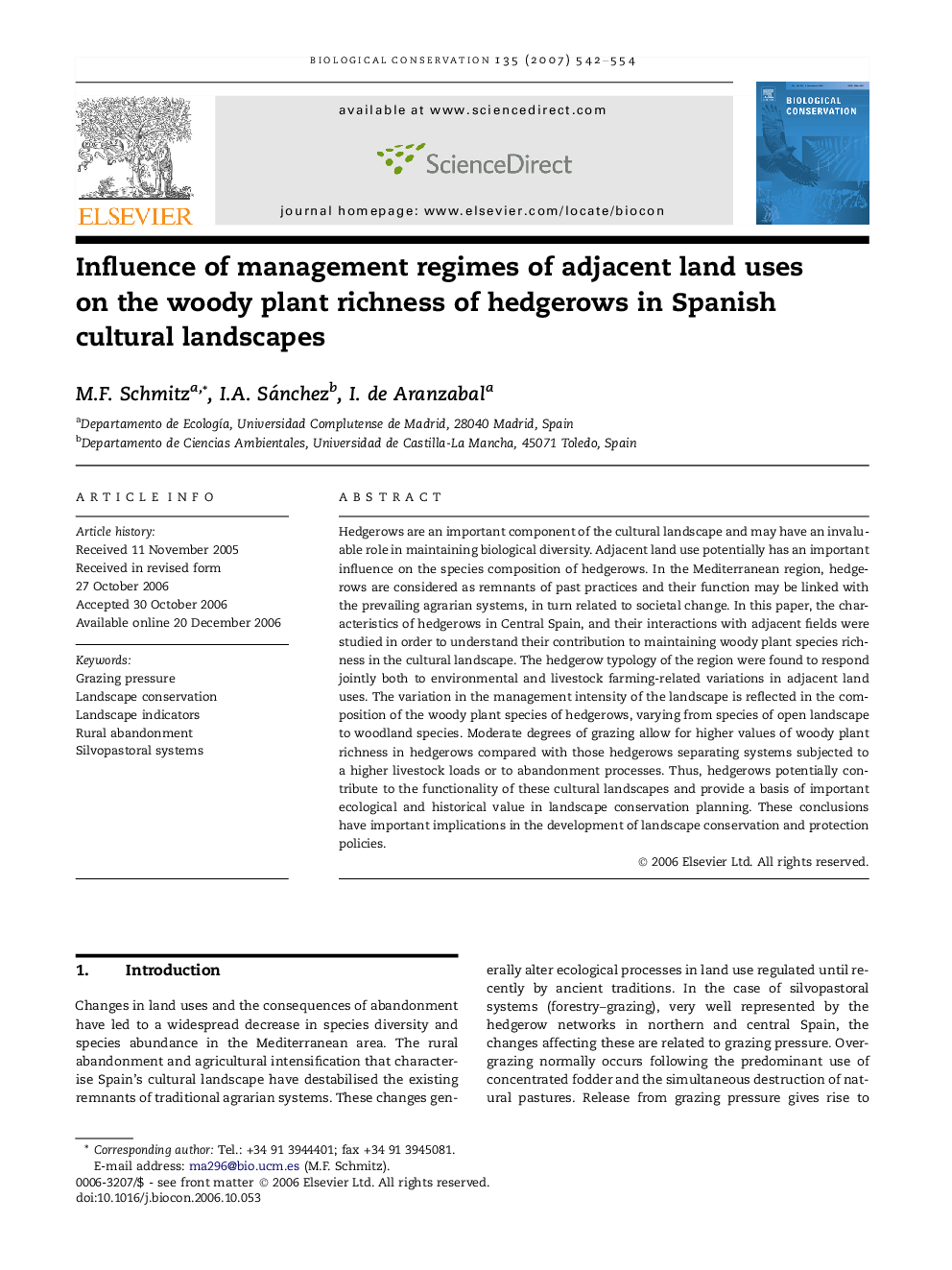| Article ID | Journal | Published Year | Pages | File Type |
|---|---|---|---|---|
| 4387281 | Biological Conservation | 2007 | 13 Pages |
Hedgerows are an important component of the cultural landscape and may have an invaluable role in maintaining biological diversity. Adjacent land use potentially has an important influence on the species composition of hedgerows. In the Mediterranean region, hedgerows are considered as remnants of past practices and their function may be linked with the prevailing agrarian systems, in turn related to societal change. In this paper, the characteristics of hedgerows in Central Spain, and their interactions with adjacent fields were studied in order to understand their contribution to maintaining woody plant species richness in the cultural landscape. The hedgerow typology of the region were found to respond jointly both to environmental and livestock farming-related variations in adjacent land uses. The variation in the management intensity of the landscape is reflected in the composition of the woody plant species of hedgerows, varying from species of open landscape to woodland species. Moderate degrees of grazing allow for higher values of woody plant richness in hedgerows compared with those hedgerows separating systems subjected to a higher livestock loads or to abandonment processes. Thus, hedgerows potentially contribute to the functionality of these cultural landscapes and provide a basis of important ecological and historical value in landscape conservation planning. These conclusions have important implications in the development of landscape conservation and protection policies.
